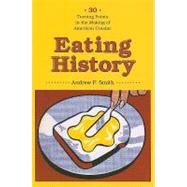
What is included with this book?
| Prerace | p. vii |
| Acknowledgments | p. xi |
| Prologue | p. 1 |
| Oliver Evans's Automated Mill | p. 5 |
| The Erie Canal | p. 13 |
| Delmonico's | p. 19 |
| Sylvester Graham's Reforms | p. 29 |
| Cyrus Mccormick's Reaper | p. 37 |
| A Multiethnic Smorgasbord | p. 45 |
| Giving Thanks | p. 57 |
| Gail Borden's Canned Milk | p. 67 |
| The Homogenizing War | p. 75 |
| The Transcontinental Railroad | p. 33 |
| Fair Food | p. 95 |
| Henry Crowell's Quaker Special | p. 105 |
| Wilbur O. Atwater's Calorimeter | p. 113 |
| The Cracker Jack Snack | p. 123 |
| Fannie Farmer's Cookbook | p. 133 |
| The Kelloggs' Corn Flakes | p. 141 |
| Upton Sinclair's Jungle | p. 155 |
| Frozen Seafood and TV Dinners | p. 165 |
| Michael Cullen's Super Market | p. 175 |
| Earle MacAusland's Gourmet | p. 185 |
| Jerome I. Rodale's Organic Gardening | p. 193 |
| Percy Spencer's Radar | p. 203 |
| Frances Roth and Katharine Angell's CIA | p. 211 |
| McDonald's Drive-in | p. 219 |
| Julia Child, the French Chef | p. 231 |
| Jean Nidetch's Diet | p. 245 |
| Alice Waters's Chez Panisse | p. 257 |
| TVFN | p. 265 |
| The Flavr Savr | p. 275 |
| Mergers, Acquisitions, and Spin-Offs | p. 285 |
| Epilogue | p. 293 |
| Notes | p. 301 |
| Bibliography | p. 347 |
| Index | p. 365 |
| Table of Contents provided by Ingram. All Rights Reserved. |
The New copy of this book will include any supplemental materials advertised. Please check the title of the book to determine if it should include any access cards, study guides, lab manuals, CDs, etc.
The Used, Rental and eBook copies of this book are not guaranteed to include any supplemental materials. Typically, only the book itself is included. This is true even if the title states it includes any access cards, study guides, lab manuals, CDs, etc.